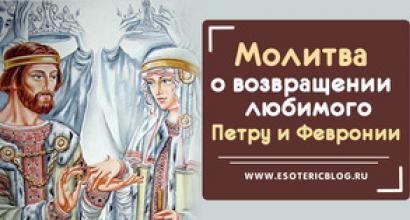Peru: interesting facts. Peru - interesting facts about the country
1. Drivers in Peru are very impatient! They honk non-stop, even if forced to stop for three seconds. Now imagine what traffic jams look like in Lima...
2. Peruvian buses have a special hostess. He invites everyone passing to the bus, even if the passers-by are moving in the opposite direction. He shouts, announcing the route of the bus, helps passengers with heavy bags, collects money for travel and generally behaves on the bus like its owner.
Some, however, introduced themselves to Peru from Argentina or Uruguay after a long journey, probably in stages. Once crossed the Andes, some of them chose to stay in Arequipa, a city in the south between the Sierra and the Pacific coast, without trying to reach the capital of Lima.
Another route for the Turks to enter Peru is the Amazon River, which immigrants sent back to Iquitos from Brazil, and they are clearly attracted by the "rubber boom" that is now at its peak. Peru knows, at the same time, the same rubber fever that encourages separatist tendencies in the Peruvian east.
3. The only countries in Europe where Peruvians can enter without a visa are Turkey and Russia.
4. Lima is a very large and unremarkable city. Tourists get there in most cases due to the fact that Cusco does not yet have an airport. There are many interesting places in Peru, but Lima is not one of them. Therefore, locals think that when an airport is opened in Cusco, there will be no tourists left in Lima ...
The presence of Turks and in particular Lebanese immigrants in the Peruvian Amazon has been confirmed for a long time without being able to say for sure. Some of them permanently settled in Iquitos or in the department of Loreto to use rubber, then, after the fall of this production, timber, installation of sawmills, which is now the largest in the region. Diversifying their activities gradually, they also began to raise livestock.
Lebanese immigrants from Brazil or their children moved to other parts of the country, some settled in Lima where they took over the trade they had in Brazil, including small shoes and the paper industry, two of their "specialties" in their first host country Although mainly from Brazil and Argentina, it is possible that Lebanese immigrants may have entered Peru via Colombia via Ecuador, Bolivia or Chile after living for a time or even a generation in these countries.
5. The two main dishes of Peru are ceviche ( fresh fish marinated in lime juice) and kui (fried guinea pig).


6. In Peru, absolutely any dish is served with rice. Rice is an integral part of the plate and is present in food a priori. Ordering anything without rice is unrealistic. Even if you ask for food without rice, rice is still brought to you. The locals cannot explain this fact, they just love rice. Most often you will have a plate: a bunch of rice, some potatoes, some lentils, salad and meat.
However, although Lebanese immigration has not yet developed in Peru, this is not only due to the geographical position of this country, which is far from the usual Lebanese migration. It is probable that, in their eyes, Peru did not appear to be a particularly attractive place. In the competition of South American countries in the late nineteenth and early twentieth centuries to attract foreign immigrants, Peru had a number of shortcomings. First, with the exception of the Amazon, there was little land to spread: in the Sierra, the land belonged to the great estates or was the undivided property of the native communities, and on the coast, the great plantations monopolized the good lands to turn industries into exports and the work they could offer. was of a slavish nature, marked by pre-capitalist production relations.
7. By the way, about rice. If you do not eat rice in Peru, then the likelihood of intestinal upset is very high. I had it all 1.5 months. Rice promotes good digestion in conditions of unusual nutrition, so we do not recommend giving it up, although eating it every day is not a test for the faint of heart.

On the other hand, it is possible that the political instability of Peru in the nineteenth century, in the absence of a strong state, and the associated security problems due to civil or military wars. succeeded so well elsewhere, was largely in the hands of the Chinese and Italians, later the Japanese, whose expectation and know-how certainly left little hope of the Turks competing with them.
Ultimately, the same reasons that held back European immigration limited Peru's immigration to Turkey. The Lebanese who still chose to establish themselves in Peru had the same social characteristics as their compatriots in other countries of Latin America: mostly Maronite Christians, they were, at least until World War II, a world of fairly modest fortune, possessing small businesses or craft workshops.
8. It is believed that Peru is a country with a very high level of service. This is especially true for expensive hotels and restaurants. Some people claim that they have not seen such a service anywhere else!
9. A few years ago, the cuisine of Peru was among the top three most exquisite and delicious cuisines in the world!
10. Peruvians are very nice, but a little arrogant people. They can stare at you and are not ashamed, they can talk on the street, and if you walk along the street with restaurants, you will be dragged there in all conceivable and inconceivable ways.
Therefore, this is not a special category of Lebanese who chooses Peru. The installation in this country was essentially a matter of opportunism: the Lebanese chose to disperse in order to be more economically successful rather than engage in ruinous competition in the same place. That is why, even within the national borders, there is no high concentration of Lebanese in Peru.
Lebanese in Peruvian society
The Lebanese language showed itself inconspicuously in Peruvian society, their migration being individual rather than communal. In the words of Selim Abu, which is even more appropriate in Peru than in Argentina, it was "immigration in scattered ranks." A few, a little spatially concentrated, they were not very noticeable. Living in other South American countries, the first generation of immigrants often already knew the Latin American way of life and spoke Spanish. Their integration does not appear to have had any major difficulties, and unlike other countries such as Argentina, Brazil or even Colombia, they have never experienced any hostility from the local population.
11. There are a lot of ancient cities and ruins in Peru, but most often people visit only Machu Picchu.

12. Some areas of Lima are very dangerous, and tourists are strongly advised not to go there. The joke is that favorable areas border on criminal ones, and sometimes this border comes unexpectedly. Just now you were walking along beautiful and well-groomed houses, and around the corner there were already shabby walls, lying people and dirt.
Their image in the Peruvian population was quite positive. A Syrian immigrant from Beirut, a very hardworking man who started a large family with his wife from the region. The recently deceased man is an example of the decisive parental influence of "Family Fulfillment."
Upon their arrival in Peru, the Lebanese, with their know-how previously acquired in other countries of immigration, 21 started small businesses or set up a small business. These activities have evolved and today the descendants of Lebanese immigrants lead relatively prosperous businesses or businesses. In Lima or Arequipa, the second largest city in Peru, their business is mainly fabrics and ready-to-wear. In ready-to-wear, the goods sold, although not luxurious in most cases, are usually of a higher quality.
13. Peru is relatively cheap. You can eat lunch - it is called Menu here - consisting of soup, a main course and a drink, for an average of 90 rubles (5-6 soles). At the same time, the portions are gigantic and you can take such a dinner for two. Eating at the markets is the cheapest.
14. Chinese restaurants are wildly popular in Peru. It's hard to believe, but there are more of them here than in Russia sushi! And this is not just Chinatown (which is also in Lima), but kilometer-long streets, where every house is a Chinese restaurant. And literally every second street of any city in Peru is exactly like that! Real Chinese people work there.
A clothing store targeting a more popular or less silver clientele. Lebanese commercial activities also originated in some cases in neighboring areas, such as home decoration, from furniture fabrics. On the other hand, they are poorly represented in the intellectual and artistic professions, at least in the first and second generations.
Their migration project, completely focused on economic success, these professions did not attract them from the very beginning. Gradually, however, through their descendants, the Lebanese had access to new sectors of professional activity. Like any population of migration, the population of Lebanese origin in Peru is multi-generational and professionally diversified.
15. In Peru, there is a strange feature for us in terms of food. Every day in all cafes, restaurants, canteens serve the same menu! Those. you can go around ten cafes and everywhere there will be the same set of dishes. At the same time, the cuisine of Peru is included in the Guinness Book of Records as the most diverse (more than 500 dishes)! 0.o
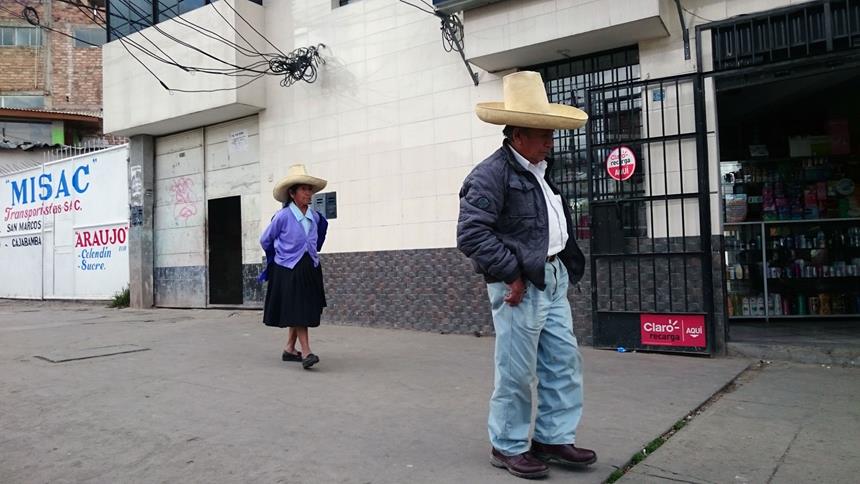
The Lebanese and their descendants are not satisfied with their economic success. They seek to turn it into a social success and will achieve it in part, through residential, marital, educational and even, but to a lesser extent, political strategies. In major urban centers, they now live in residential areas. Sometimes from the first generation, certainly from the second, mixed marriages are allowed, even encouraged, and their children are enrolled in the best private Catholic institutions. not from the wealthy class: they are frequent private clubs located in the vicinity of large cities.
16. Peruvians are very enterprising. They quickly figure out where and how to make money.
17. Sellers of goods usually sit next to each other. Suppose there is a street where they sell fruit juice. When you enter this street, 10 vendors immediately jump on you and shout at your face: “Juice, juice, fruit juice, come to me, fruit juice!” At the same time, the assortment and prices for all ten are the same. How do you decide who to buy from if they all look at you and invite you to their place?
Their interest in national sports activities is at the heart of the sporting success of one of them, Abugattas, a high jump champion who recently represented Peru in international athletics competitions. One of strengths The Lebanese would undoubtedly be their phenotype that caused them to be classified as "white", according to the skin color representation system in the Peruvian population, which is not exactly identical to that of South American countries in which the population of European ancestry is much larger.
18. Three in Peru official languages: Spanish, Quechua and Aymara. And east of the Andes in the Amazonian jungle, another 13 different languages are spoken.
19. The two main national drinks of Peru are Chicha (corn compote, sometimes low-alcohol, like kvass) and Pisco Sour (a cocktail of Pisco brandy, limes and egg white).
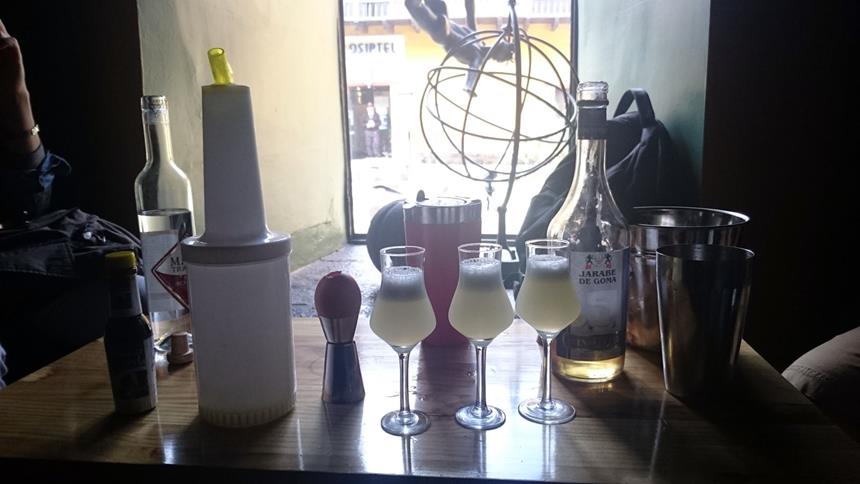
This classification is not without social implications, in particular in the choice of a spouse to whom they can claim. In contrast to Argentina, where Turks were classified as "Asian" and often stigmatized as such, in Peru they were more likely to be perceived as close to southern European immigrants.
With which, in addition to the color of their skin, they had a total number of social characteristics: they were even sometimes even associated with Italians, often also created in trade. Indeed, Peruvian immigration, like other countries in Latin America, has benefited from the opening of borders to facilitate immigration to Europe. Moreover, the Lebanese arrived in the Americas via Europe, traveling on European ships accompanied by European immigrants. Finally, since the French Mandate of Lebanon, some immigrants had identity papers, and all Lebanese emigrants belonged to the French consulates in South America, in order to obtain the citizenship of the host country. All these factors contributed to strengthening the association of Lebanese thought Peruvians with Europeans, and not with Asians.
20. During the celebration of the Independence Day of Peru in Lima, the first fountain from Pisco was opened. During his work, citizens drank about 2,000 liters of a 45-degree drink. You can look at this fountain on the main square of the capital.
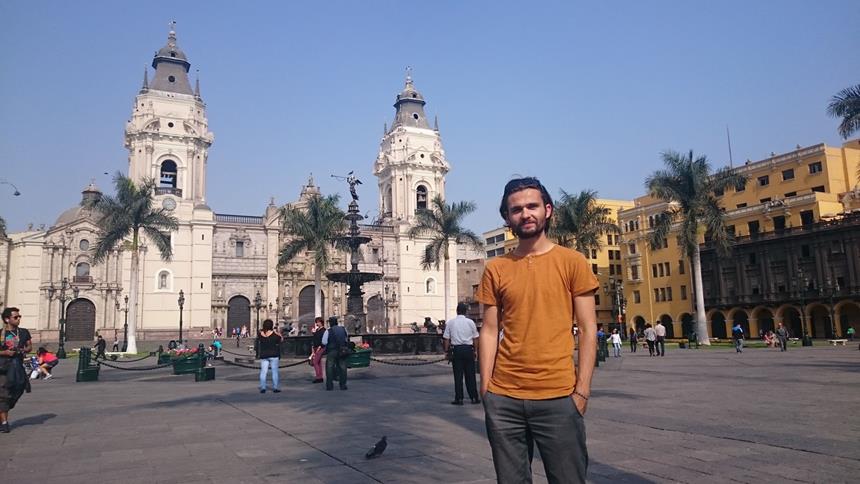
21. Peru has the oldest institution of higher education in Latin America. The University of San Marcos was founded in 1551.
In Peru, at any rate, the category "Asians" was almost exclusively reserved as early as the nineteenth century for Chinese immigrants who later became associated with the Japanese. The Catholic religious affiliation of the vast majority of Lebanese immigrants in Peru also played a role in their integration, although this is not necessarily a priori. Lebanese Catholics are, in fact, almost all Maronites and have their own liturgy in Lebanon, very different from the Roman liturgy, and their own clergy.
In other Catholic immigration countries, France, in particular, the Catholicism of some migrants, Italians, Poles and Spaniards, especially when they constituted practically autonomous parishes, served as clergy of the same nationality as them, can be seen as a factor preventing integration and accused of "superstitious ", "retrograde" Catholicism, etc. in the case of the Lebanese of Peru, because of their small numbers, there were no Maronite parishes or Maronite colleges, as in Argentina or Brazil.
22. Thanks to Peru, the planet has learned about crops such as tomato, potato and avocado. At the same time, today potatoes are more popular in Europe, because. Rice is preferred in Peru.
23. Peru has the second largest number of shamans in the world, second only to India.
![]()
Faced with this state of affairs, the Lebanese agreed to unite in the Peruvian catholic church. However, the integration and social success of Lebanese immigrants faces certain restrictions that are more similar to "social boundaries" than "ethnic boundaries". The old Hispanic Creole aristocracy does not readily accept the new rich, especially those of foreign origin: it is not a matter of income or professional merit, but of birth. In Peru, very few people from Lebanon have great wealth, they are part of the middle class, sometimes the upper middle class.
24. They say that in Peru, in the depths of the Amazon, a tribe of Indians was found that does not know about civilization. The government and scientists carefully hide their location so as not to interfere with their lives.
25. In Peru, the influence of Indian culture is felt everywhere. Most hotels and hostels have names in the Quechua language, and Native American ornaments are often found in advertising.
Social inclusion is also measured by the degree of political participation. The descendants of Lebanese immigrants feel like deeply Peruvian citizens, and once they arrive in Peru, the Lebanese don't seem to be in the mood for citizenship. Most of them acquired Peruvian nationality. However, contrary to what can be observed in neighboring countries, notably Colombia and Ecuador, not to mention Argentina and Brazil, their commitment to political action remains weak.
Mansour, a woodworking industry associated with local Freemasonry, will be elected mayor of Iquitos, the main city of the Peruvian Amazon, based on a regional political movement that claims to be "independent", like the movement that supported Alberto Fujimori's candidacy for President of the Republic. The success of Mufarech and Mansour, like that of Fujimori, testifies to the emergence in Peru of new political elites from non-European foreign immigration.
26. By the way, the Indians were still those perverts. In the museums of Peru, you can see entire halls with ceramic art of the Indians: jugs in the form of women giving birth, plates in the form of copulating women and dogs, urns and vases in the form of masturbating men, and this is just the beginning.

27. The famous esoteric writer Carlos Castaneda was born in Peru, in the city of Cajamarca. True, according to another version, he was born in Brazil. It is not known for sure.
28. The most famous pin-up artist Alberto Vargas is also from Peru. He, like Castaneda, emigrated to America, where he later became famous. His work was so popular that the term "vargas girls" appeared, and in the 40s many military aircraft adorned his "girls".

29. Two thirds of Peru are covered with tropical forests.
30. In Peru, there is a tradition of giving friends and family members yellow underpants on New Year's Eve. And in general, dressing in all yellow is the color of good luck.
31. Peru's most popular lemonade is Inca Cola. Coca-Cola also produces it, but the Peruvians have elevated it almost to the rank of a national drink. They drink it everywhere and always, both locals and tourists. By the way, it tastes like Mountain Dew.
32. Motorcycle taxis are popular in small towns in Peru. The cost of the trip is 2-3 soles (35 rubles).

33. Intercity buses in Peru always show films, most often very loudly and most often in Spanish. Another way to learn Spanish.
34. More than 55 types of corn are grown in Peru: yellow, purple, white and black. Cobs of white corn with huge grains are often sold on the streets and on buses, usually with a piece of cheese added to it. By the way, Peru has many unique varieties of cheese.
35. Participation in elections in Peru is mandatory. If, upon reaching the age of 18, a person has not voted, he is not issued a passport. Also, in most cases, after the election, a citizen is denied access to public services.

P.S. By the way, all blog subscribers receive from our partners.
We collect interesting facts about Peru. In general, Peru curious country, but most have not heard anything about it, except that some correctly associate with Machu Picchu.
1. Peru is one of the twenty largest countries in the world, it ranks 19th in the world in terms of territory.
2. Peru is home to such well-known vegetable crops as avocados, potatoes and tomatoes.
3. Peru has the deepest canyon in the world - Cotahuasi Canyon. Its depth is 3,535 meters. For comparison, the depth of the Grand Canyon in the United States is 1600 m.
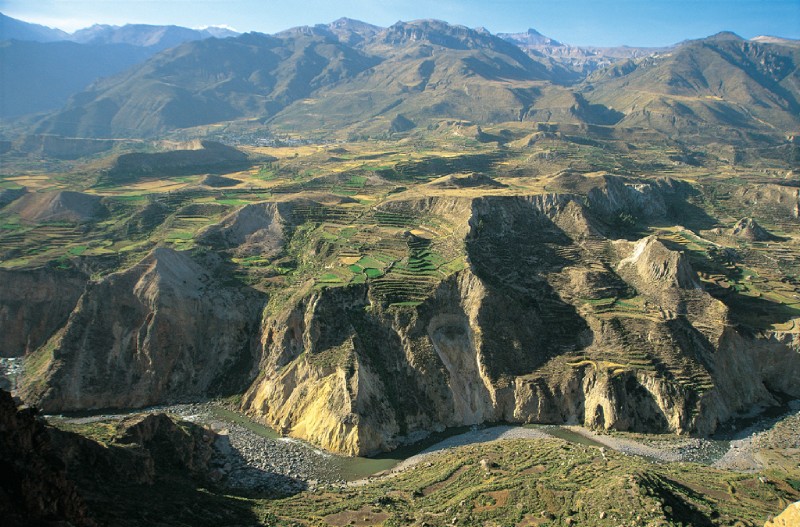
4. You might be surprised, but Peruvian cuisine is included in the Guinness Book of Records as the most diverse. It has about 500 dishes. Peruvian cuisine has developed under the influence of two cultures - Indian and Spanish. The mixture turned out to be very impressive (one dish of baked guinea pig is worth something)))

5. Despite the poverty of the population, the level of education is 90%. These figures were achieved thanks to free primary and secondary education.
6. On the territory of modern Peru is the ancient city of the Incas - Machu Picchu. Of course, the ancient town is the main attraction of the country. About 2000 people visit it every day! tourists. I'm thinking that the fact that nature did not manage to destroy the city in a few hundred years, tourists will do in a couple of years))

7. Lake Titicaca, which Peru shares with Bolivia, is the “highest” navigable lake in the world.

8. Peru is home to the oldest institution of higher education in the Americas. The University of San Marcos was established in 1551.
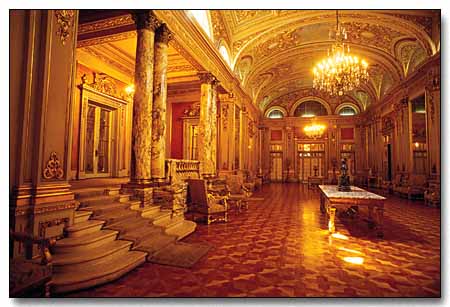
9. A bit of everyday life. In 1939, the girl Lina Medina from Peru, who was only 5 years old!! gave birth to a boy by caesarean section. This is the earliest recorded case of childbirth in the history of modern medical observations. The child was born quite healthy, and Lina is alive to this day.
10. In Lima, during the celebration of Peru's Independence Day, the first vodka fountain was opened. During his work, citizens drank about 2,000 liters of a 45-degree drink.
11. If during a conversation with you, a Peruvian twists his finger at his temple, don't be scared, it doesn't mean that he calls you crazy, it means that he just thinks))
12. It was the Peruvians (although then those people were not yet called Peruvians) who domesticated such a wonderful animal as the llama. It happened approximately 1000 BC.



